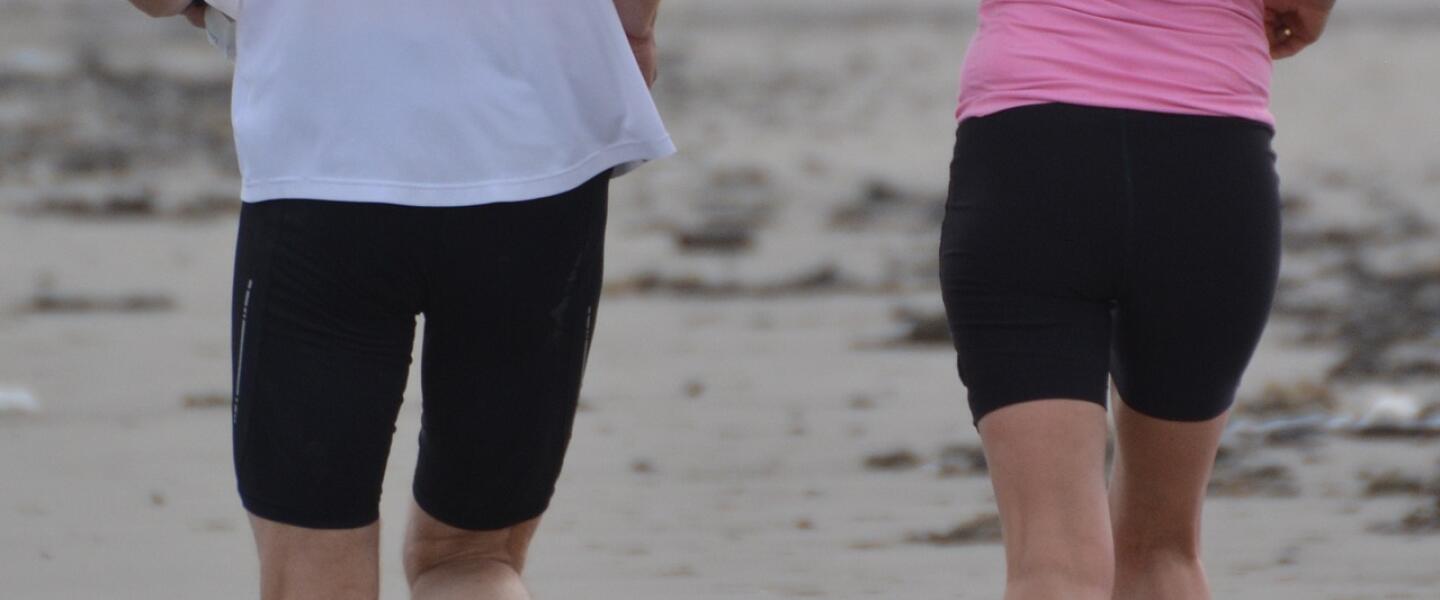
Written by Jen VanAllen
As runners, we’re constantly debating which aches we can tough out and run through, and which pains are red flags that we should seek medical attention. After all, some soreness is to be expected whenever you’re pushing your body farther or faster than you’ve gone before. “When injury is more of a nagging or dull ache it can be difficult to distinguish between this pain and normal soreness,” says Adam St. Pierre, a Boulder-based ultrarunner, exercise physiologist and founder of Boulder, Co-based ASTP Coaching. The trouble is that if you guess wrong and try to run through an injury, say if you’re training for a race, you might end up changing your gait to avoid the pain, which can cause overuse injuries in other areas of the body. “Trying to run through injury can also result in furthering of the the original injury,” he says. But it’s also easy to err in the opposite extreme, says says Laura Dunne, a primary care sports medicine physician with Orthopedic Associates of Allentown, in Pennsylvania. “Runners with no race in sight might rest longer than is needed or rest and not make the changes they need in order to build core strength or balance required to get safely back to running.”
Here are some tips to help you determine whether you’re just reaping the sore rewards of a tough workout, or whether you need to run to the doctor.
When The Pain Persists
When you experience pain at rest, and it intensifies with any weight-bearing activity like walking or running, it’s time to see a doctor, says Dunne. “Pain that improves as you get moving is generally not concerning,” she says. “Most simple things will improve after you get warmed up. But symptoms that worsen after the first mile are of concern.”
When The Pain Is Very Sharp
If you experience a dull general achiness in your muscles, that’s a normal sign that you have challenge your body in the previous day’s workout. And it’s no cause for worry. But a sharp, shooting sensation is typically a sign that you have an injury. “Generally a sharp onset of pain is a bad sign,” says St. Pierre. Usually—but not always—a sharp pain will follow a twist or a fall.
When The Pain Appears Suddenly
With a sharp or acute onset of pain medical attention is likely necessary, says St. Pierre. Often an acute injury needs to settle down for a day (or a few days) before a medical provider can provide an accurate diagnosis. If a a sharp or acute pain is still present after 24 to 48 hours, make an appointment with a physical therapist, sports medicine doctor or other provider. Make your appointment as soon as possible after the injury, as many times the doctors are booked a few days out, St. Pierre says. If the pain goes away, you can always cancel!
When The Pain Sticks Around For More Than Three Days
Most minor irritations can improve with three days of rest, icing, and stretching, says Dunne. But if the pain lasts more than two to three days, it’s most likely the result of injury and not normal soreness, says St. Pierre. “Anything that is no big deal should not hurt with day-to-day activity by three days,” says Dunne. “Anything that changes how you move for longer than three days is concerning.”
When The Pain Is Isolated In One Area
Generally if pain is focused in an area or comes on very quickly then it likely will need medical attention. For instance, if your left knee hurts, but there is little or no pain elsewhere, that’s a sign that you may need medical attention for acute injury, says St. Pierre.
When The Pain Gets In The Way
If you have obvious signs of trauma, like bruising and swelling, especially in the knees or ankles, see a doctor for evaluation. If the pain interferes with routine activities like walking, standing, sitting, and climbing or descending stairs, seek medical attention, says St. Pierre. “Unfortunately us runners often have high thresholds for pain and willingness to work through it.”
Think Prevention
Of course, prevention, as they say, is the best medicine. Some of the more common injuries result from overuse, and so gradually persist and worsen over time that it’s not obvious that medical attention is required. “ These injuries sideline more runners than acute injuries,” St. Pierre says. To avoid chronic issues like IT Band Syndrome and plantar fasciitis, routinely work on your biomechanics, plus strength, stability, and range of motion in key running muscles and joints. And avoid the terrible Too’s of adding too much speed or too many miles before your body is ready. “The most important is to progress training volume and intensity in such a way as to allow the body to gradually strengthen structurally to avoid injury,” says St. Pierre.
Latest News
Upcoming Events
Tully Free Library Turkey Trot 5K Run/Walk
All Day | 5872 Meeting House Rd, Tully, NY 13159
The Tully Free Library Turkey Trot 5K Run/Walk is held every year on Thanksgiving Day mornin…
Learn More ›Live Like Liam
All Day | Jamesville-DeWitt High School, 6845 Edinger Dr, De Witt, NY 13214
"Live Like Liam"... Celebrate life and community as you help fund important initiatives in L…
Learn More ›
Connect With Us
see the latest from Fleet Feet Syracuse